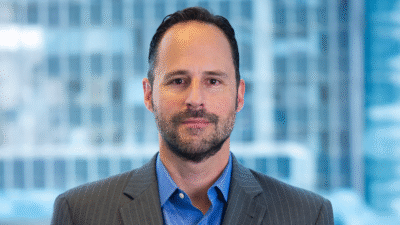The Rise of the Buffer ETF
Assets under management in defined outcome ETFs are expected to top $650 billion by 2030, according to BlackRock data.

Sign up for exclusive news and analysis of the rapidly evolving ETF landscape.
BlackRock is betting on the future of buffers.
Buffer ETFs that limit downside risk but also have caps on upside gains, are having a moment. Assets have ballooned from $5 billion in 2019 to $181 billion last year, according to recent BlackRock and Morningstar data. It’s expected to triple to $650 billion by the end of the decade. Despite the higher fees, buffer ETFs earn more than 10% per dollar invested per year over the past five years, per Morningstar.
The dramatic rise in buffer ETFs’ AUM reflects current market volatility and geopolitical turbulence, signaling a sea change in how financial professionals think about mitigating portfolio risk. “These products have staying power,” said Charles Champagne, head of ETF strategy at Allianz Investment Management. “They definitely have longevity.”
Bullish on Buffers
Defined outcome ETFs allow investors to buy stocks and sell them at their starting price even if prices fall, preventing losses, while also selling call options above current stock prices, limiting upside yields. The SEC’s 2019 ETF rule streamlined fund launches and led to a boom in new buffered products, which are bought and sold at the beginning and end of a predetermined period. Down markets, like the investing environment of 2022, have also had a significant impact on buffers’ popularity, since they are increasingly regarded as a stand-in for fixed-income when equity markets are down, according to Champagne. Although the buffer market is currently highly concentrated — First Trust and Innovator dominate the space — it is likely to grow “from [both] an issuance standpoint and an asset standpoint,” he added.
“When the market’s looking iffy, advisors tend to allocate more to fixed-income for that diversification effect and protection,” Champagne said. “We’ve stress-tested portfolios… and what we found was, if you take about 10% away from fixed-income and 10% away from the equity allocation and move it into a buffer, it generally outperforms over a long-term horizon.”
Buffer ETFs are also being launched at breakneck speed. According to the BlackRock study:
- In the past five years, nearly 500 buffer ETFs have been launched.
- Last year, 27% of all new ETF listings were buffer funds.
Over the Hurdle (Rate). Much of the recent rise in popularity can also be attributed to the market swings following President Trump’s “Liberation Day” tariffs, as investors seek safe havens. Still, the period in which an investor buys a buffer can have a strong impact on its performance. AllianzIM offers a unique uncapped structure buffer ETF, with a limit of 15% on the downside but unlimited upside yields beyond a given “hurdle rate.” “It’s a really strong structure when you have a bullish view on the market,” Champagne said.











